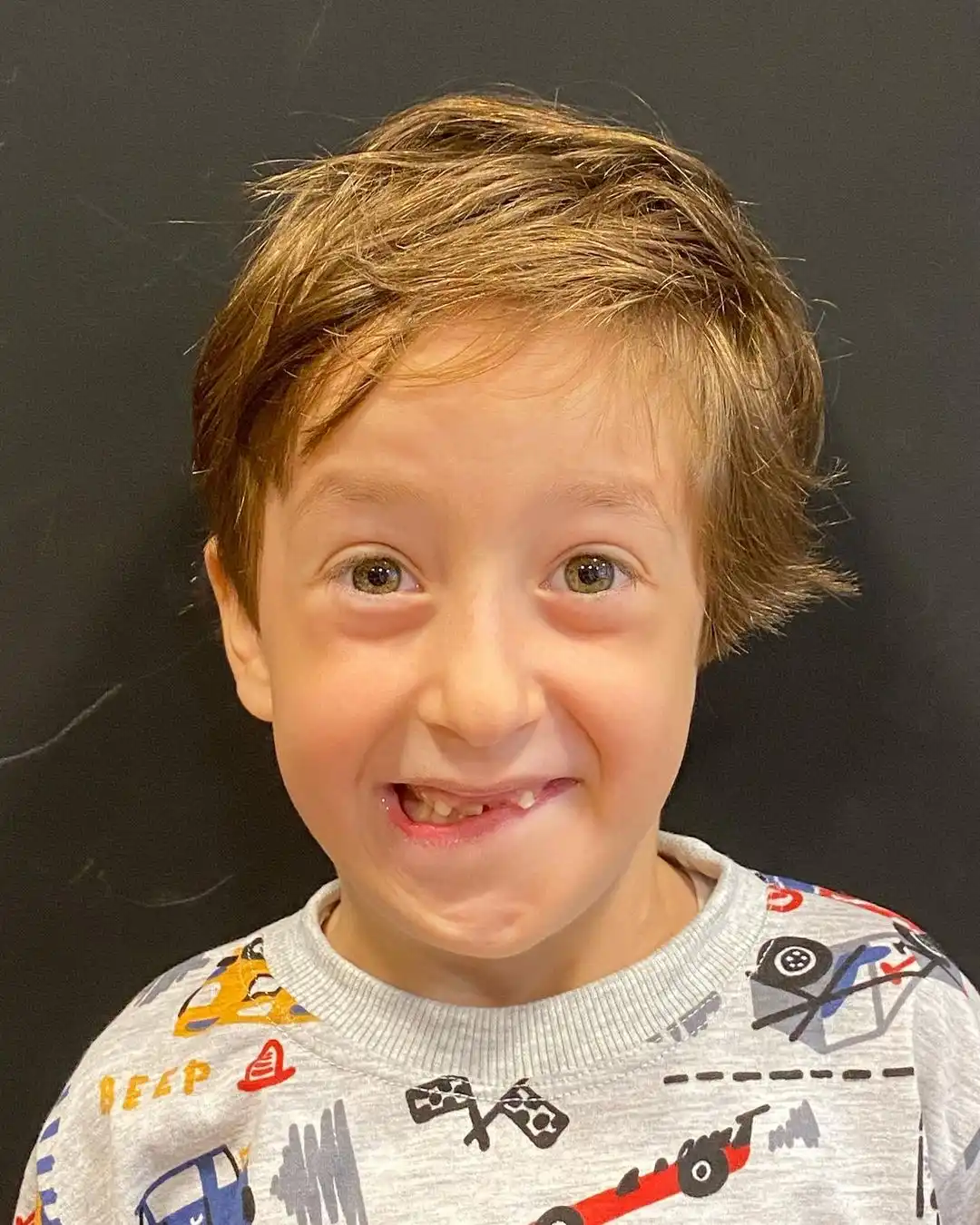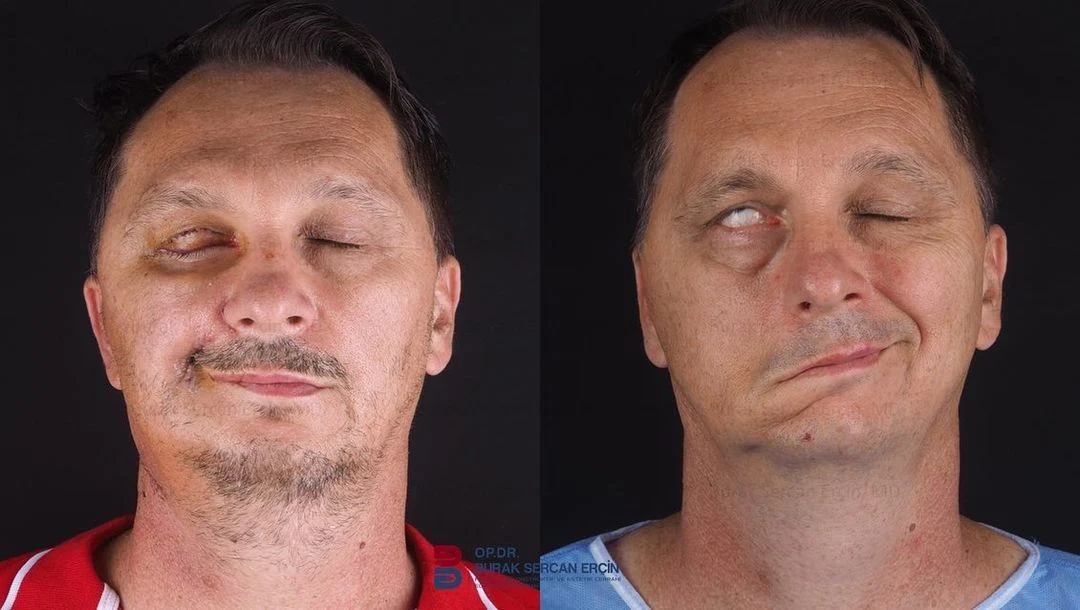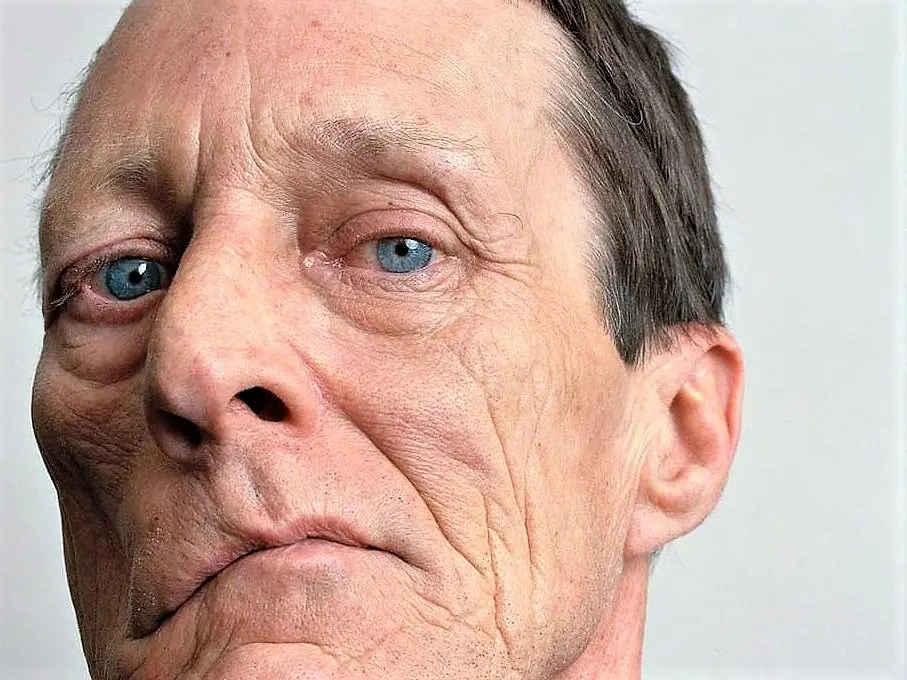What Is Facial Paralysis Treatment?
Facial Paralysis, also known as Acute Peripheral Facial Palsy or Facial Nerve Palsy, is a condition that affects the movement of the muscles in the face. It occurs when there is damage or injury to the facial nerve, which is the nerve responsible for controlling the muscles of the face. This can result in a loss of movement or weakness on one side of the face or in some cases, on both sides.
Facial paralysis can occur suddenly or develop gradually over time, and it can be caused by a variety of factors such as viral infections, trauma, autoimmune diseases, or genetic disorders. The most common cause of facial paralysis is Bell’s Palsy, which is a condition that affects the facial nerve and is thought to be caused by a viral infection.
The symptoms of facial paralysis can vary depending on the severity of the condition, but they often include drooping or weakness on one side of the face, difficulty smiling or closing the eye on one side, drooling, and difficulty with speech or eating. In some cases, patients may also experience pain or discomfort in the affected area.
Treatment for facial paralysis depends on the underlying cause and the severity of the condition. In some cases, the condition may improve on its own over time, while in others, medication or surgery may be necessary to restore movement and function to the affected muscles. Physical therapy and rehabilitation exercises can also be helpful in restoring strength and function to the affected area.
Facial paralysis can have a significant impact on a person’s quality of life, affecting their ability to communicate, express emotion, and perform daily tasks. Therefore, early diagnosis and treatment are important in achieving the best possible outcome for patients with facial paralysis.

What Causes Facial Paralysis?
There can be several causes of facial paralysis, including:
Bell’s Palsy: This is the most common cause of facial paralysis, accounting for about 60-75% of cases. Bell’s palsy occurs when the facial nerve, which controls the muscles of the face, becomes inflamed or compressed, leading to facial weakness or paralysis.
Trauma: Trauma to the face or head can also cause facial paralysis. This can be due to a direct injury to the facial nerve, or from swelling or bleeding in the brain that affects the nerve.
Stroke: A stroke can cause facial paralysis, as it can affect the part of the brain that controls the facial muscles.
Infections: Certain infections, such as Lyme disease, HIV, or viral meningitis, can cause facial paralysis.
Tumors: Rarely, tumors in the brain or head and neck region can cause facial paralysis by compressing the facial nerve.
Congenital: In some cases, facial paralysis can be present at birth due to abnormal development of the facial nerve or muscles.
What Are Symptoms of Facial Paralysis?
Facial paralysis, also known as facial palsy, can cause a range of symptoms, which can vary depending on the cause and severity of the condition. The following are some of the most common symptoms associated with facial paralysis:
- Inability to move the facial muscles on one or both sides of the face
- Drooping of the eyelid or corner of the mouth
- Difficulty with speech and eating
- Dry eye or excessive tearing
- Loss of taste sensation on the front two-thirds of the tongue
- Increased sensitivity to sound on the affected side
- Pain or discomfort around the jaw or behind the ear
- Headache
- Dizziness or loss of balance
How Can Facial Paralysis Be Diagnosed?
The diagnosis of facial paralysis begins with a physical examination by a healthcare professional. During the examination, the healthcare professional will observe the patient’s facial movements and assess the strength and symmetry of the muscles. They may also test the patient’s ability to move their eyes, close their eyelids, and make facial expressions.
Additional tests may be conducted to determine the cause of the facial paralysis, which may include blood tests, imaging studies such as magnetic resonance imaging (MRI) or computed tomography (CT), and nerve conduction studies. These tests can help determine the underlying cause of the facial paralysis, such as a viral infection or nerve damage.
How Is Facial Paralysis Diagnosed and Treated in Children?
Facial paralysis in children can be a distressing condition, both for the child and the parents. It can occur as a result of a variety of underlying causes, including birth trauma, infections, and neurological disorders. Prompt diagnosis and treatment are crucial to improve the chances of a successful recovery and prevent long-term complications.
Diagnosis:
The diagnosis of facial paralysis in children is similar to diagnosis in adults. It typically involves a physical examination and medical history evaluation. The doctor will examine the child’s face for signs of weakness or asymmetry, and assess their ability to move the facial muscles. Other tests, such as blood tests, imaging studies, or electromyography (EMG), may be recommended to identify the underlying cause of the paralysis.
Treatment:
The treatment of facial paralysis in children depends on the underlying cause and the severity of the condition. Mild cases may resolve on their own over time, while more severe cases may require immediate medical attention.
Medications: Depending on the cause of the facial paralysis, medications such as steroids, antiviral drugs, or antibiotics may be prescribed to reduce inflammation, fight infections, or improve nerve function.
Physical Therapy: Physical therapy may be recommended to help strengthen facial muscles and improve mobility.
Surgery: In some cases, surgery may be necessary to repair or replace damaged nerves or to correct structural abnormalities that may be causing the paralysis.
Supportive Measures: Children with facial paralysis may require supportive measures, such as eye drops or patches, to protect the affected eye and prevent complications.
Counseling: Children and their families may benefit from counseling to help cope with the emotional and psychological impact of facial paralysis.
Types of Facial Paralysis
There are several types of facial paralysis, each with their own specific causes and symptoms.
Bell’s Palsy: Bell’s palsy is the most common type of facial paralysis, accounting for about 60-75% of all cases. According to the National Institute of Neurological Disorders and Stroke, about 40,000 Americans experience sudden facial paralysis each year due to Bell’s palsy. It is usually caused by a viral infection that affects the facial nerve, leading to inflammation and swelling. Symptoms may include drooping of the mouth or eyelid, drooling, difficulty closing the eye, and decreased ability to taste.
Traumatic Facial Paralysis: Traumatic facial paralysis occurs as a result of physical injury or trauma to the facial nerve. This can be caused by a fracture, laceration, or penetrating wound. Symptoms may include numbness, weakness, or complete loss of control on one or both sides of the face.
Ramsay Hunt Syndrome: Ramsay Hunt syndrome is a type of facial paralysis that is caused by the herpes zoster virus, the same virus that causes shingles. Symptoms may include severe pain in the ear, rash on the face or in the ear, and paralysis of the facial muscles.
Moebius Syndrome: Moebius syndrome is a rare congenital disorder that affects the cranial nerves, including the facial nerve. It can cause facial paralysis, as well as other symptoms such as difficulty swallowing and speaking, and abnormal eye movements.
Hereditary Facial Paralysis: Hereditary facial paralysis is a genetic condition that is passed down through families. It can cause weakness or paralysis on one or both sides of the face, as well as other symptoms such as hearing loss and problems with balance.
What Surgical Techniques Are Available for the Treatment of Facial Paralysis?
Depending on the underlying cause, there are various surgical techniques available to treat facial paralysis. Here are some of the most common surgical techniques used for the treatment of facial paralysis:
Facial Reanimation Surgery: This surgical technique is used to restore movement and symmetry to the face in patients with permanent facial paralysis. During the surgery, the surgeon may use a muscle from another part of the body, such as the leg or the abdomen, to replace the damaged facial muscle. The muscle is then connected to the facial nerve using nerve grafts or nerve transfers.
Nerve Grafting: This technique involves taking a healthy nerve from another part of the body, such as the leg, and using it to replace the damaged facial nerve. The healthy nerve is surgically connected to the damaged nerve in the face, allowing for the regeneration of the nerve fibers.
Nerve Transfer: In cases where the facial nerve is completely damaged, a nerve transfer technique may be used. This involves taking a nerve from another muscle, usually from the neck or shoulder, and connecting it to the facial nerve to restore movement to the face.
Botox Injections: Botox Injections, also known as Botulinum Toxin Injections, can be used to relax the muscles on one side of the face, creating a more symmetrical appearance. This technique is typically used for temporary facial paralysis caused by Bell’s palsy.
Eyelid Surgery: In patients with facial paralysis, the eyelids may droop or not close properly, leading to eye dryness, irritation, and even vision problems. Eyelid surgery can help restore the natural function of the eyelids, allowing for better eye protection and improved appearance.
Other Cosmetic Surgeries: There are several cosmetic surgeries that can be used to treat facial paralysis. For example, face lift surgery can help to tighten and smooth the skin on the face, improving overall appearance and reducing the appearance of sagging caused by facial paralysis. On the other hand, in some cases where facial paralysis affects the muscles around the nose, a rhinoplasty procedure can be used to reshape the nose and restore balance to the face.
What Are the Main Symptoms of Bell’s Palsy?
Here are the main symptoms of Bell’s Palsy:
- Facial drooping can affect the forehead, eyelids, mouth, and cheek
- Difficulty smiling or closing the eye
- Difficulty controlling saliva and experiencing drooling or difficulty eating or drinking
- Bell’s Palsy can affect the sense of taste, making food taste different or causing a loss of taste on one side of the tongue.
- Pain around the jaw or behind the ear on the affected side, as well as headaches.
What Is the Recovery Process of Facial Paralysis?
According to the damage to the nerves that occur in people who have had facial paralysis, the recovery of facial paralysis proceeds in parallel. In mild facial paralysis, the nerves are less damaged, while in severe facial paralysis, the nerves are more damaged. Recovery may be seen in a few days in mild facial paralysis. In the case of severe damage to the nerves, the recovery period may vary from 15 days to 8 months.
Facial Paralysis Treatment FAQ
Are Facial Paralysis and Bell’s Palsy the Same?
Facial paralysis and Bell’s palsy are not the same, but Bell’s palsy is a type of facial paralysis. Facial paralysis refers to any type of facial muscle weakness or paralysis, which can be caused by various conditions or injuries. Bell’s palsy, on the other hand, is a specific type of facial paralysis that occurs when the facial nerve that controls the muscles on one side of the face becomes inflamed.
Is Facial Paralysis / Bell's Palsy Caused By Stress?
While stress can weaken the immune system and increase the risk of developing Bell’s Palsy, it is not a direct cause of the condition. The underlying cause of Bell’s Palsy is believed to be inflammation or compression of the facial nerve.
What Are the Effects of Facial Paralysis on Daily Activities, Relationships, and Work?
Facial paralysis can have significant effects on daily activities, relationships, and work. It can affect a person’s ability to communicate, express emotions, and eat properly. It can also cause self-consciousness and social isolation. In some cases, it may affect a person’s ability to work or perform certain job duties.
What Are Some Complications Associated with Facial Paralysis?
Complications associated with facial paralysis may include difficulty speaking, eating, and drinking, dry eyes and mouth, corneal abrasions or ulcers, and emotional distress. Additionally, prolonged facial paralysis can cause muscle contracture and scarring.
What Kind Of Follow-Up Care Is Necessary After Facial Paralysis Treatment?
Follow-up care after facial paralysis treatment may include regular check-ups with the healthcare provider, physical therapy, and possibly further surgical procedures. The healthcare provider may also recommend ongoing treatment for any underlying conditions that contributed to the development of facial paralysis.
What Are Some Non-Surgical Treatment Options for Facial Paralysis?
Some non-surgical treatment options for facial paralysis include physical therapy, facial exercises, and the use of supportive devices such as facial slings, taping, or splints.
Can Facial Paralysis Be Cured?
The possibility of a cure for facial paralysis depends on the underlying cause. In some cases, such as Bell’s palsy, facial paralysis can resolve on its own without treatment. However, in other cases, such as paralysis caused by nerve damage, it may not be possible to fully cure the condition.
Can Bell's Palsy Be Cured?
Bell’s palsy may resolve on its own without treatment. However, some cases may require medical intervention and treatment options, such as steroids or antiviral medication, to help speed up the recovery process.










